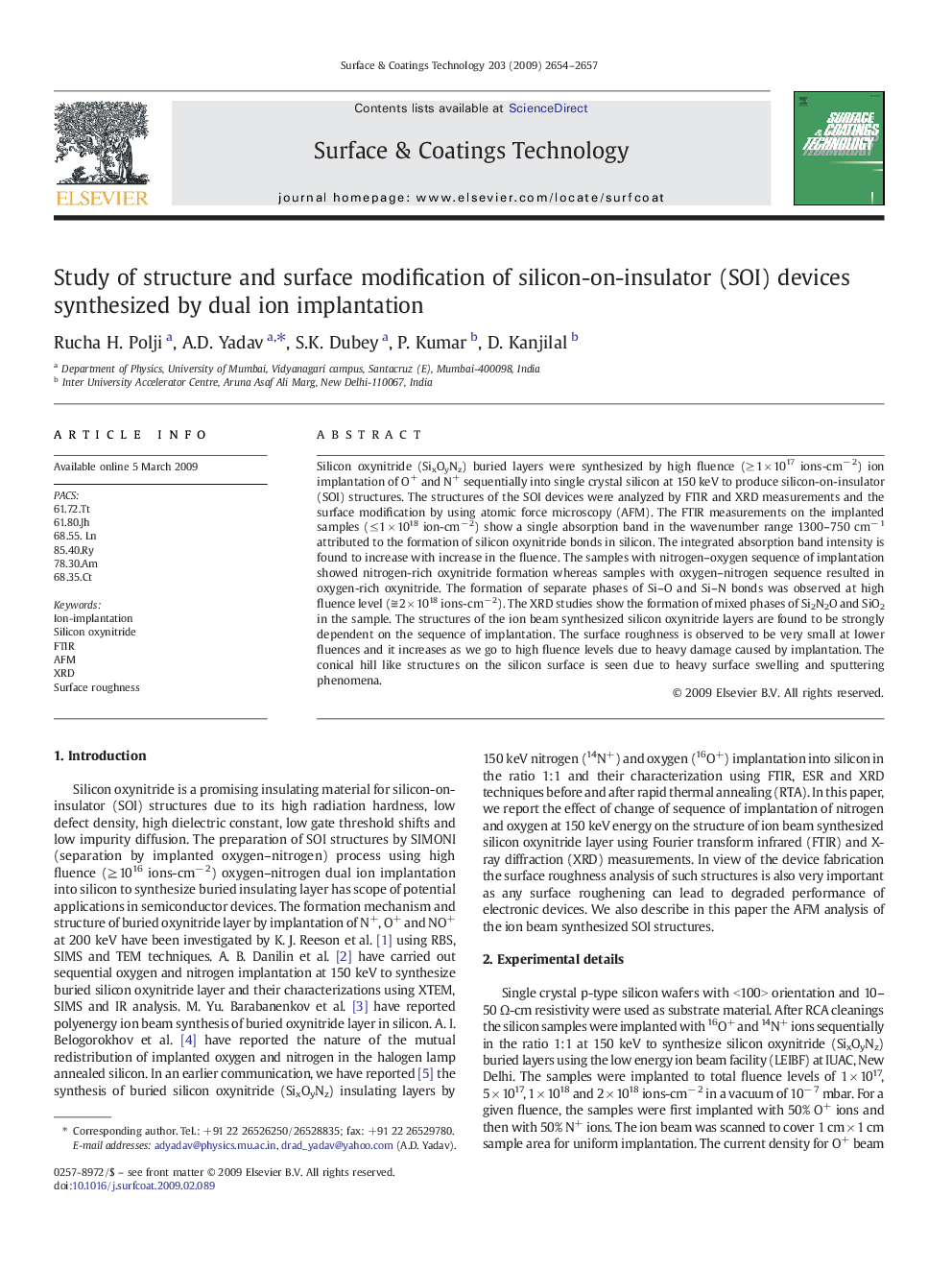| Article ID | Journal | Published Year | Pages | File Type |
|---|---|---|---|---|
| 1660199 | Surface and Coatings Technology | 2009 | 4 Pages |
Silicon oxynitride (SixOyNz) buried layers were synthesized by high fluence (≥ 1 × 1017 ions-cm− 2) ion implantation of O+ and N+ sequentially into single crystal silicon at 150 keV to produce silicon-on-insulator (SOI) structures. The structures of the SOI devices were analyzed by FTIR and XRD measurements and the surface modification by using atomic force microscopy (AFM). The FTIR measurements on the implanted samples (≤ 1 × 1018 ion-cm− 2) show a single absorption band in the wavenumber range 1300–750 cm− 1 attributed to the formation of silicon oxynitride bonds in silicon. The integrated absorption band intensity is found to increase with increase in the fluence. The samples with nitrogen–oxygen sequence of implantation showed nitrogen-rich oxynitride formation whereas samples with oxygen–nitrogen sequence resulted in oxygen-rich oxynitride. The formation of separate phases of Si–O and Si–N bonds was observed at high fluence level (≅ 2 × 1018 ions-cm− 2). The XRD studies show the formation of mixed phases of Si2N2O and SiO2 in the sample. The structures of the ion beam synthesized silicon oxynitride layers are found to be strongly dependent on the sequence of implantation. The surface roughness is observed to be very small at lower fluences and it increases as we go to high fluence levels due to heavy damage caused by implantation. The conical hill like structures on the silicon surface is seen due to heavy surface swelling and sputtering phenomena.
